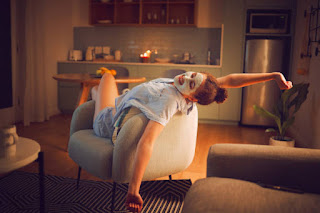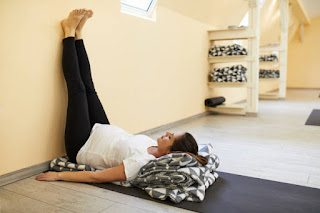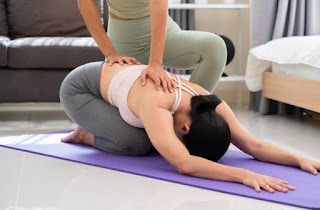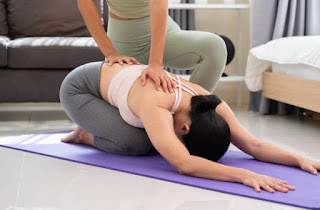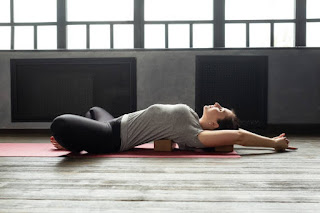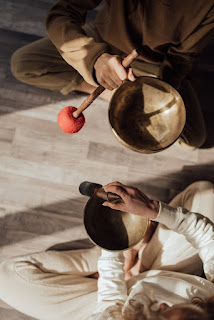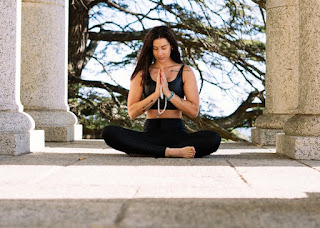Yoga Poses to Wind Down: Evening Routines for Restful Sleep
Yoga Poses to Wind Down: Evening Routines for Restful Sleep
As the day winds down and the world around us quiets, many of us find our minds still racing, making it difficult to transition into restful sleep. The stress and activity of the day often accumulate in both our minds and bodies, and without a way to release that tension, it can interfere with sleep quality. Yoga offers an effective way to wind down, calm the mind, and relax the body, preparing us for a peaceful night of sleep.
In this article, we’ll explore yoga poses specifically designed to release tension, soothe the nervous system, and encourage relaxation. By practicing these poses as part of a regular evening routine, you can create the perfect environment for sleep. Along with these poses, we’ll dive into how to use breathwork and mindfulness to enhance relaxation, making your routine even more effective.
The Science Behind Yoga and Sleep
Yoga works on multiple levels to help promote better sleep. On a physical level, it releases tightness in muscles, stretches the body, and eases physical discomfort that might interfere with sleep. On a mental level, yoga helps quiet the mind by encouraging focus on the breath and mindful movement.
One of the key ways yoga helps with sleep is by stimulating the parasympathetic nervous system, also known as the “rest and digest” system. When this system is activated, your heart rate slows down, your muscles relax, and your mind calms. This contrasts with the sympathetic nervous system, which is responsible for the “fight or flight” response and is often overstimulated by stress. Yoga helps to counterbalance this by promoting relaxation, lowering cortisol levels (the stress hormone), and preparing the body for sleep.
Incorporating yoga into your evening routine not only helps with physical relaxation but also has a profound impact on mental well-being. By transitioning the body into a relaxed state, yoga paves the way for a smoother, more restful night’s sleep.
Viparita Karani (Legs-Up-The-Wall Pose)
Viparita Karani, or Legs-Up-The-Wall Pose, is one of the most powerful restorative poses for promoting relaxation. This gentle inversion allows gravity to assist in circulating blood and fluids away from the lower body toward the heart and brain, calming the nervous system and encouraging a state of relaxation.
How to Practice Viparita Karani:
- Sit sideways with one hip touching the wall.
- Swing your legs up the wall as you lower your back to the floor.
- Your hips should be a few inches away from the wall, with your legs resting against it.
- Rest your arms by your sides or on your belly, and focus on long, slow breaths.
- Hold the pose for 5-10 minutes, letting your body relax into the floor.
This pose is particularly effective after a long day of standing or sitting, as it relieves pressure from the legs and lower back. The combination of physical relaxation and increased blood flow to the brain helps signal to your body that it’s time to unwind.
Supta Baddha Konasana (Reclining Bound Angle Pose)
Supta Baddha Konasana is another restorative pose that targets areas where tension often builds, particularly in the hips and lower back. This gentle hip opener encourages a deep sense of relaxation, while also promoting deep breathing, which helps soothe the nervous system.
How to Practice Supta Baddha Konasana:
- Lie on your back with your knees bent and feet flat on the floor.
- Bring the soles of your feet together and allow your knees to fall open, creating a diamond shape with your legs.
- For added support, place pillows or blocks under your knees.
- Rest your hands on your belly or by your sides, focusing on slow, deep breaths.
- Stay in this pose for 5-10 minutes.
This pose helps open the hips, an area that can hold significant tension, especially if you’ve spent the day sitting or standing for long periods. It also creates space for deep diaphragmatic breathing, which is essential for promoting relaxation.
Paschimottanasana (Seated Forward Fold)
Forward folds, like Paschimottanasana, encourage a sense of inward focus and calm. This pose stretches the spine, hamstrings, and lower back, releasing physical tension in these areas while also gently compressing the abdomen to stimulate the digestive system—a key factor in promoting relaxation.
How to Practice Paschimottanasana:
- Sit with your legs extended straight in front of you.
- Flex your feet and engage your thighs.
- Inhale to lengthen your spine, and as you exhale, fold forward over your legs.
- Reach for your feet, ankles, or shins, keeping your spine long.
- Hold the pose for 3-5 minutes, focusing on each exhale to release tension.
As you move deeper into this pose, allow your head to relax toward your knees. This gentle forward fold not only stretches the body but also encourages introspection and quiets the mind, making it an excellent pose to practice before bed.
Balasana (Child’s Pose)
Child’s Pose is a classic yoga posture used for rest and recovery, but it’s also incredibly effective at calming the mind. By gently stretching the hips, thighs, and spine, and lowering the forehead to the ground, this pose creates a sense of grounding and promotes feelings of safety and relaxation.
How to Practice Balasana:
- Begin on your hands and knees in a tabletop position.
- Bring your big toes together and open your knees wide.
- Sit your hips back toward your heels, stretching your arms forward and resting your forehead on the floor.
- Breathe deeply, staying in this pose for 3-5 minutes.
This pose encourages diaphragmatic breathing, which helps lower stress levels and ease the body into a state of rest. It’s particularly helpful for those who feel scattered or anxious before bed, helping to quiet the mind.
Shavasana (Corpse Pose)
Shavasana is traditionally the final pose in a yoga practice, but it’s also an excellent posture for preparing the body and mind for sleep. It allows for full-body relaxation and helps the nervous system shift into a parasympathetic state, making it easier to fall asleep.
How to Practice Shavasana:
- Lie flat on your back with your legs extended and arms resting by your sides, palms facing up.
- Allow your feet to fall open naturally and close your eyes.
- Focus on your breath, letting go of any tension with each exhale.
- Stay in this pose for 5-10 minutes, allowing your body to melt into the floor.
Shavasana provides a quiet moment of rest, both physically and mentally, encouraging complete relaxation. It’s the perfect pose to practice right before bed to let go of the day and ease into a peaceful state of mind.
Breathwork for Sleep
In addition to the physical poses, incorporating breathwork (pranayama) into your evening routine can enhance relaxation. One of the most effective breathing techniques for promoting sleep is the 4-7-8 Breathing Method, which calms the nervous system and reduces stress.
How to Practice 4-7-8 Breathing:
- Inhale quietly through your nose for a count of 4.
- Hold your breath for a count of 7.
- Exhale completely through your mouth for a count of 8.
- Repeat this cycle 4-6 times.
This simple technique helps activate the parasympathetic nervous system, slowing the heart rate and encouraging a sense of calm. Pairing breathwork with the yoga poses above can create a powerful evening routine to help you unwind.
Tips for Creating a Calming Evening Routine
Incorporating yoga into your evening routine doesn’t have to take much time, but consistency is key. Here are some additional tips to help create a routine that promotes restful sleep:
- Set a Regular Practice Time: Establish a consistent time each evening to practice yoga. Even 10-15 minutes can make a significant difference.
- Create a Calming Environment: Dim the lights, light a candle, or use soothing essential oils like lavender to enhance relaxation.
- Mindful Disconnect: Avoid screen time at least 30 minutes before bed. The blue light from devices can interfere with melatonin production, making it harder to fall asleep.
- Add Meditation or Gratitude Journaling: After your yoga practice, spend a few minutes meditating or writing down what you’re grateful for. This helps calm the mind and shift focus away from any stressors of the day.
Conclusion
By incorporating yoga into your evening routine, you can create a sacred space for relaxation and prepare your body and mind for a restful night’s sleep. Poses like Viparita Karani, Supta Baddha Konasana, and forward folds are designed to release tension, calm the nervous system, and promote deep relaxation. Paired with mindful breathing and a consistent routine, these poses can transform the way you wind down, leading to better sleep and overall well-being.
Take a few moments each night to nurture yourself with these practices, and experience the profound effects they have on your sleep quality.
